SupremePunk #133
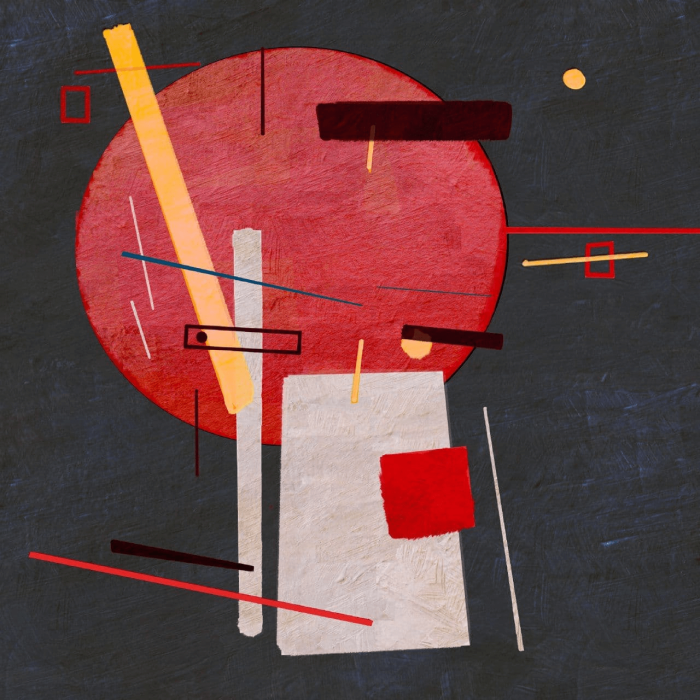
Сlarity
This Punk is inspired by CryptoPunk #5990 and the the work of Nikolai Suetin. This Soviet avant-garde artist is known for his suprematist experiments in art. For example, he developed the Suprematist architectural order, but his quest largely ended with the models-"architectons," although one cannot ignore the "Suprematist funeral rite" in which Kazimir Malevich's funeral was conducted. In addition, Nikolai Suetin is considered a reformer of porcelain art: his genius belongs to suprematist vases (vases-"suetons"), services, plates and inkpots. Not for nothing Suetin is considered one of the most devoted pupils of Kazimir Malevich, because he really tried to "suprematize" the whole surrounding world, to subordinate it to geometric principles and ideals.
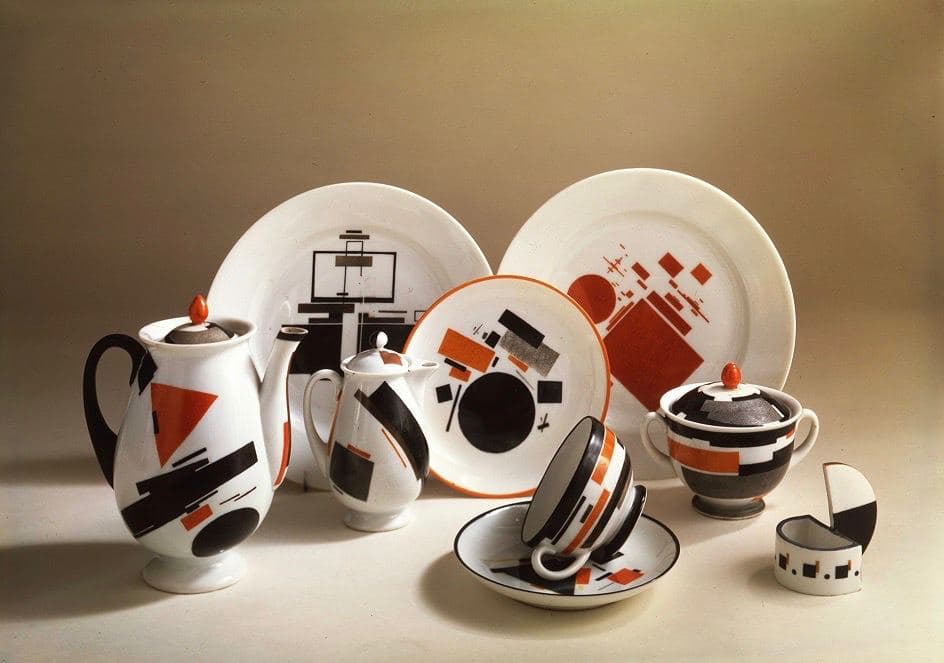
Nikolai Suetin — Suprematist porcelain, 1922-1928
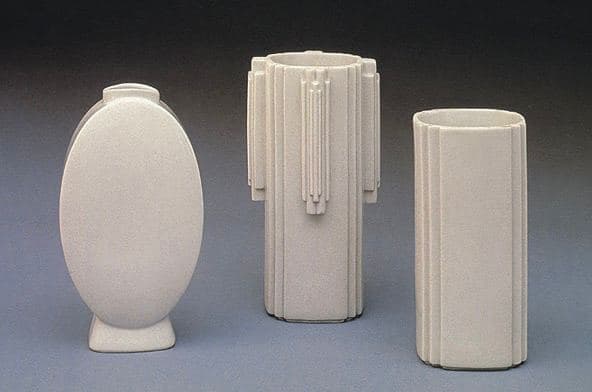
Nikolai Suetin — Suprematist plateware, 1922-1928
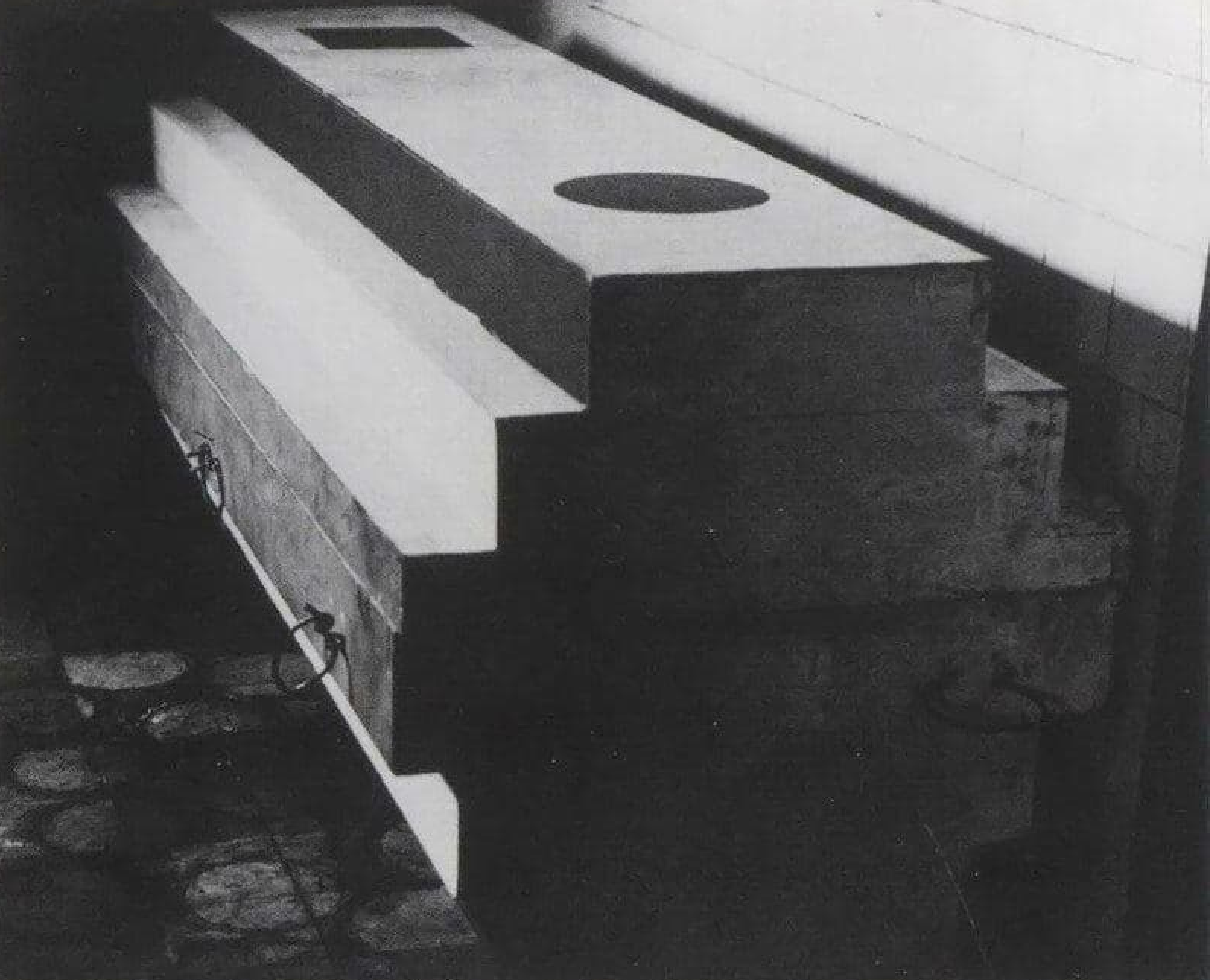
Nikolai Suetin — Suprematist coffin, 1935 (designed for K. Malevich)
So what is the affinity between his work and this Punk?
If we turn to the pictorial heritage of Nikolai Mikhailovich, we can notice a clear geometric and coloristic similarity. In his paintings, often the most large-scale figure is a circle of warm colors (usually orange or red). On top of it are placed rectangular elements of different sizes, from exquisitely oblong to gravely wide. The color of these elements is either close to the color of the circle or, conversely, contrasts with it (for example, white, gray or black).
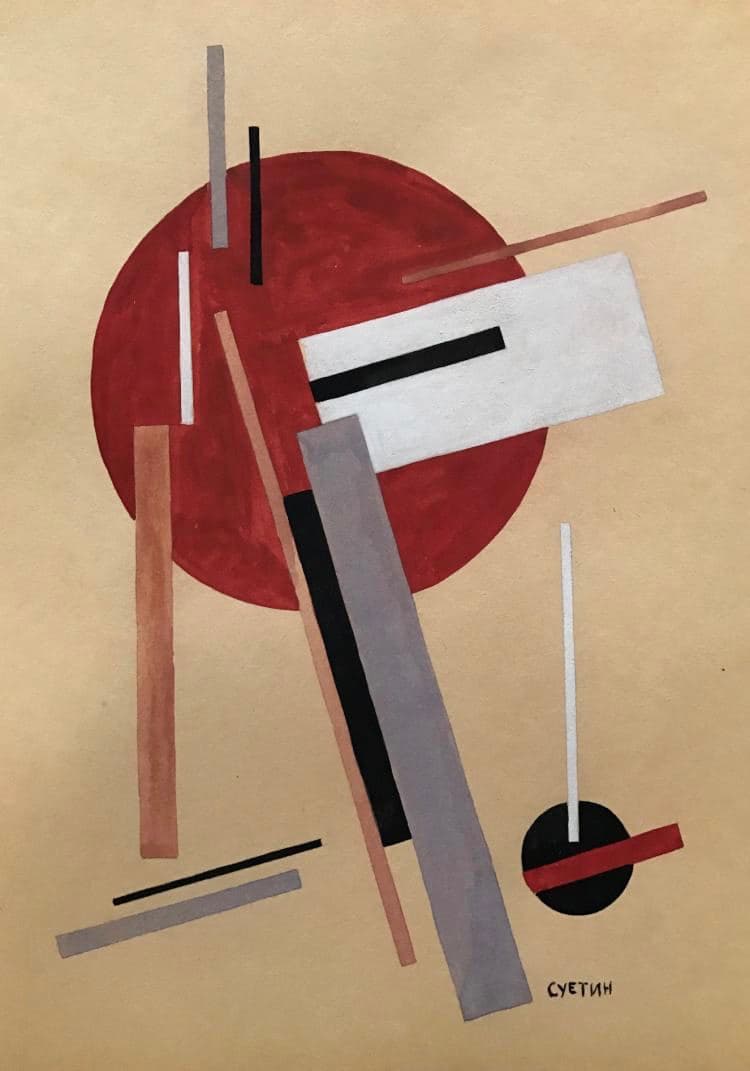
Nikolai Suetin — Gouache on paper, (early work)
It can also be noted that this SupremePunk is an homage to the early Suetin rather than to the late Suetin, because the late Suetin gravitated more towards Social Realism, his works were becoming less provocative, even if we consider the Suprematic works of the late period: there the position of figures is more strict, relying on the general vertical. While the early Suetin is much more chaotic: the figures in his works of the 20s do not have a common center or a common point of reference. It is worth noting, though, that despite this, they look more harmonious.
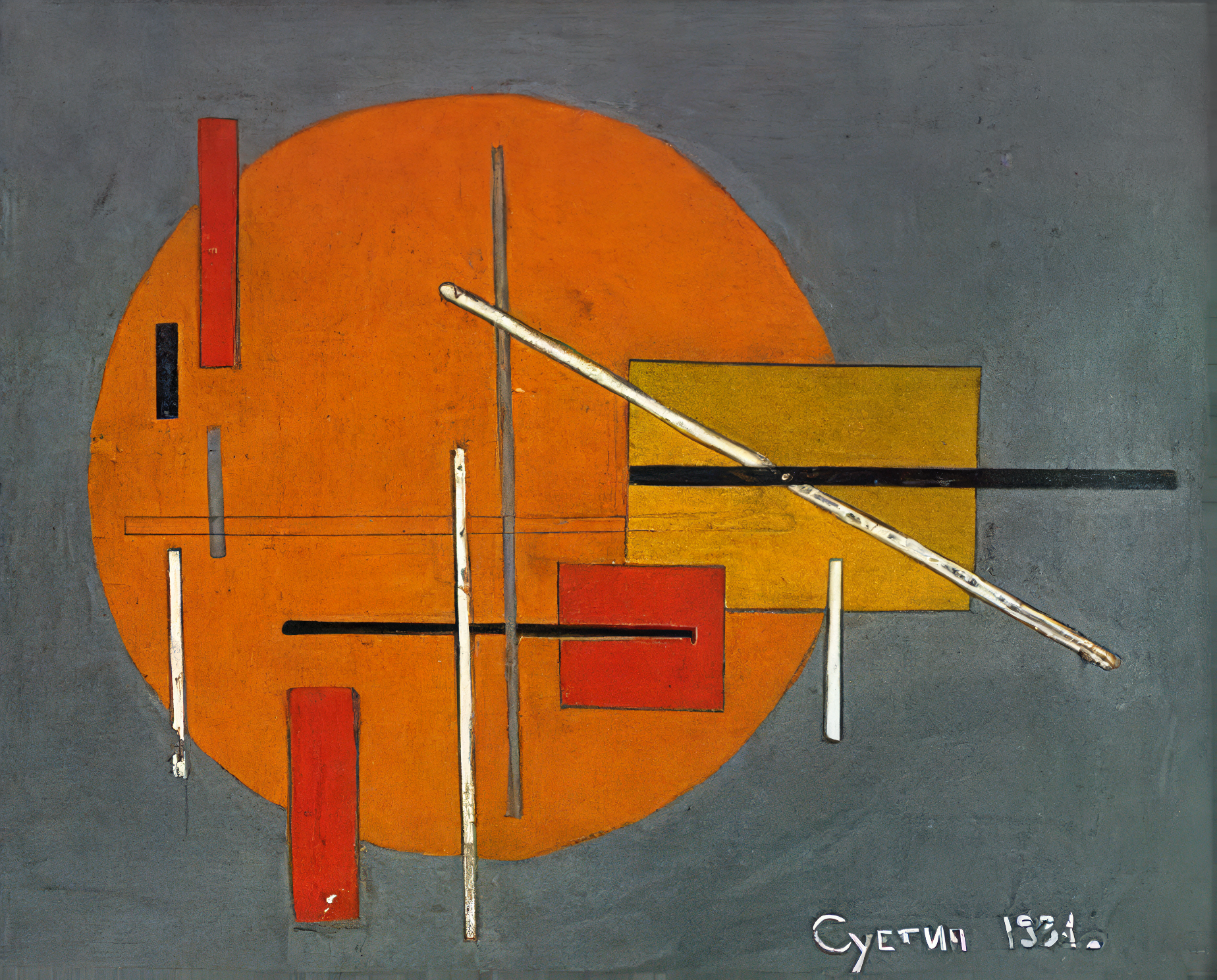
Nikolai Suetin — Suprematist composition, 1931
You can also note that this one is closer to the early Suetin, because the early Suetin often duplicated the main figure-center of the composition in the details of the canvas, which the author does, in particular by repeating the circular shapes in the character's eyes and in the yellow accent in the upper right corner of the image.

Buy

Gallery:
CryptoPunk #5990 that has been taken as a base

Your transaction is in progress

You have connected to the wrong network

Transaction is successful!


